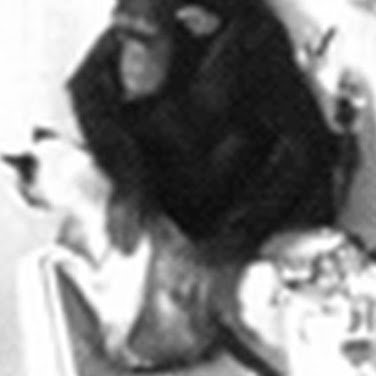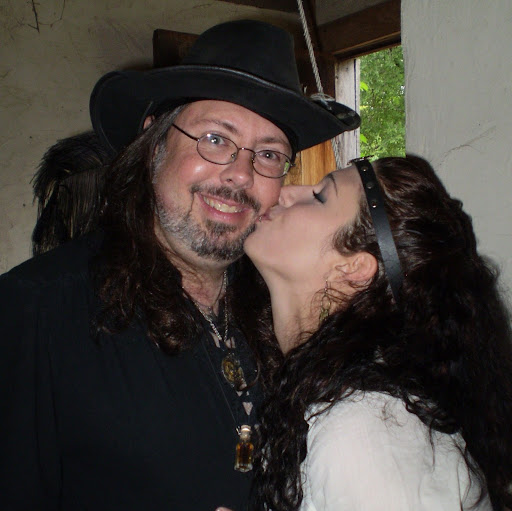Raymond F Clark
age ~56
from North Rose, NY
- Also known as:
-
- Raymond Floyd Clark
- Ray F Clark
- Raymond E Clarck
- Raymond Cl
Raymond Clark Phones & Addresses
- North Rose, NY
- Sodus, NY
- Lyons, NY
- Wolcott, NY
- Wayne, NY
- Clearville, PA
- Mesa, AZ
Wikipedia References

Raymond Clark (Engineer)
Lawyers & Attorneys
Resumes

Raymond Clark St. Louis, MO
view sourceWork:
City of St. Louis Refuse Division
2007 to 2013 Chouteau
2000 to 2007
Transporter South Grand
1992 to 2000
Machine Operator/ Forklift Driver Mopped
1998 to 1999
2007 to 2013 Chouteau
2000 to 2007
Transporter South Grand
1992 to 2000
Machine Operator/ Forklift Driver Mopped
1998 to 1999
Education:
Soldan High School
1986
High School Diploma
1986
High School Diploma
License Records
Raymond Dwight Clark
License #:
93117 - Expired
Issued Date:
Jul 1, 1990
Renew Date:
Sep 30, 1991
Expiration Date:
Sep 30, 1991
Type:
Registered Nurse
Name / Title
Company / Classification
Phones & Addresses
Director Information Technology
Xerox Corporation
Mfg Photographic Equipment/Supplies · Mfg & Svc Computer Peripheral Equip & Copiers
Mfg Photographic Equipment/Supplies · Mfg & Svc Computer Peripheral Equip & Copiers
800 Phillips Rd, Webster, NY 14580
(585)4224564, (585)4235090
(585)4224564, (585)4235090
SOM OHIO LLC
OBTEGO, INC
CLARK WATER INC
PERKINS & WILL OF OHIO, L.L.P
SECOND STREET PHOTOGRAPHY, LLC
Incorporator
CLARK BROTHERS CONSTRUCTION COMPANY, INC
RAY'S MEMORY LANE INC
Us Patents
-
Method And System For Classifying And Processing Of Pixels Of Image Data
view source -
US Patent:6347153, Feb 12, 2002
-
Filed:Sep 23, 1998
-
Appl. No.:09/159534
-
Inventors:Roger L. Triplett - Penfield NY
Raymond J. Clark - Webster NY
Jeng-Nan Shiau - Webster NY -
Assignee:Xerox Corporation - Stamford CT
-
International Classification:G06K 962
-
US Classification:382224, 382299
-
Abstract:A system and method classify a pixel of image data as one of a plurality of image types. A first image characteristic value for the pixel, a second image characteristic value for the pixel, a third image characteristic value for the pixel, and a fourth image characteristic for the pixel is determined. Some of these determinations may be resolution dependent. The values from these determination are utilized in assigning an image type classification to the pixel. An auto-segmentation circuit enables classifying a pixel as a continuous tone and detecting a gradient in the window of pixels of which the pixel is a member. A filter enhances the image data of the pixel tone when a gradient indicating that image data within the window of pixels is changing at a rate greater than a predetermined threshold is detected or lowpasses the image data of the pixel tone when a gradient indicating that image data within the window of pixels is changing at a rate less than a predetermined threshold is detected.
-
Method And Apparatus For Distinguishing Between Noisy Continuous Tone Document Types And Other Document Types To Maintain Reliable Image Segmentation
view source -
US Patent:6411735, Jun 25, 2002
-
Filed:Sep 23, 1998
-
Appl. No.:09/158868
-
Inventors:Leon C. Williams - Walworth NY
Raymond J. Clark - Webster NY
Stuart A. Schweid - Pittsford NY -
Assignee:Xerox Corporation - Stamford CT
-
International Classification:G06K 962
-
US Classification:382224, 382173
-
Abstract:A method and apparatus are disclosed for distinguishing noisy continuous tone document types from other document types such as halftone or text, in order to maintain reliable image segmentation. In both cases a Range of Video microclassifier is added to the other microclassifiers (Sij, estimated halftone frequency, etc. ) to disqualify noisy continuous tone images from being incorrectly classified as other document types such as halftone or text document types.
-
Method And Apparatus For Implementing Integrated Cavity Effect Correction In Scanners
view source -
US Patent:6631215, Oct 7, 2003
-
Filed:Nov 23, 1999
-
Appl. No.:09/448009
-
Inventors:Jeng-nan Shiau - Webster NY
Raymond J. Clark - Webster NY
Stuart A. Schweid - Pittsford NY
Terri A. Clingerman - Palmyra NY -
Assignee:Xerox Corporation - Stamford CT
-
International Classification:G06K 940
-
US Classification:382260, 358 327, 382274, 382279
-
Abstract:A method and apparatus are provided for determining a weighted average measured reflectance parameter R for pixels in an image for use in integrated cavity effect correction of the image. For each pixel of interest P in the image, an approximate spatial dependent average A , B of video values in a region of W pixels by H scan lines surrounding the pixel of interest P is computed by convolving video values V of the image in the region with a uniform filter. For each pixel of interest P a result of the convolving step is used as the reflectance parameter R. The apparatus includes a video buffer for storing the pixels of the original scanned image, and first and second stage average buffers for storing the computed approximate spatial dependent averages A , B. First and second stage processing circuits respectively generate the first and second stage average values A , B by convolving the video values of the image in a preselected region with a uniform filter.
-
Pdf De-Chunking And Object Classification
view source -
US Patent:20100021069, Jan 28, 2010
-
Filed:Jul 22, 2008
-
Appl. No.:12/177321
-
Inventors:Zhigang Fan - Webster NY, US
Reiner Eschbach - Webster NY, US
Michael Branciforte - Rochester NY, US
Roger L. Triplett - Penfield NY, US
Raymond J. Clark - Webster NY, US
William A. Fuss - Rochester NY, US
Michael E. Farrell - Ontario NY, US
David E. Rumph - Pasadena CA, US -
Assignee:Xerox Corporation - Norwalk CT
-
International Classification:G06K 9/62
-
US Classification:382224
-
Abstract:Systems and methods are described that facilitate identifying objects in a document (e.g., a PDF document) for automatic image enhancement (AIE). A PDF document is “chunked” or segmented into chunks, and boundaries between chunks are identified as real or imaginary. Chunks sharing imaginary boundaries are combined, while real boundaries are retained, to generate “de-chunked” objects. These objects are then classified, and an AIE application is executed on objects meeting pre-specified classification criteria. In this manner, objects of r which AIE is not desired are not subjected to the AIE application, thereby saving time and processing resources associated with enhancing the document.
-
Data Architecture For Mixed Resolution Interleaved Cross-Channel Data Flow And Format
view source -
US Patent:20120274955, Nov 1, 2012
-
Filed:May 23, 2011
-
Appl. No.:13/113647
-
Inventors:PETER A. CREAN - Webster NY, US
ROBERT PAUL LOCE - Webster NY, US
RAYMOND J. CLARK - Webster NY, US -
Assignee:Xerox Corporation - Norwalk CT
-
International Classification:H04N 1/60
-
US Classification:358 19
-
Abstract:The present application provides a mixed resolution, interleaving-based, cross-channel data flow and data format for a printer image path. The architecture provides pixel data for a colorant of a given writing channel at its nominal (full) resolution, while pixel data for other colorants is provided at lowered resolution. Pixel data for a primary channel at its full resolution is interleaved with data for other secondary channels at lower resolution. Known sub-sampling or compression techniques can be used to lower the resolution of the secondary channels. The data at the different resolutions is generated by the digital front end (DFE), which distributes the data for each writing channel at the time it is needed. Preferably, the low resolution data is sent first to the writer, followed by high resolution data, so that data buffering is minimized.
-
Method And System For Billing Based On Color Component Histograms
view source -
US Patent:20130097099, Apr 18, 2013
-
Filed:Oct 18, 2011
-
Appl. No.:13/275934
-
Inventors:Raymond J. CLARK - Webster NY, US
Stuart A. Schweid - Pittsford NY, US
Roger Lee Triplett - Penfield NY, US -
Assignee:XEROX CORPORATION - Norwalk CT
-
International Classification:G06Q 30/02
-
US Classification:705400
-
Abstract:Disclosed is a processor-implemented method for processing images. The processor receives image data of a color space defined by input provided to a system by a user, determines at least one color attribute of the pixels in the received image correlating to at least perceptual image characteristics, determines statistics using the attribute(s), and analyzes the statistics to classify the image into a category. Based on at least the category, a billing structure for the image is determined. For example, chroma and/or hue of pixels can be used to create histograms, whose data is used to determine a degree of color and/or content of an image, which is categorized. Color space components of received pixels can also be statistically analyzed. Such determinations consider billing based on human perception of use of color. Billing for color images in this manner satisfies the user and increases use of color output (e.g., printing).
-
Detection And Rendering Of Text In Tinted Areas
view source -
US Patent:58526781, Dec 22, 1998
-
Filed:May 30, 1996
-
Appl. No.:8/655523
-
Inventors:Jeng-nan Shiau - Webster NY
Zhigang Fan - Webster NY
Raymond J. Clark - Webster NY -
Assignee:Xerox Corporation - Stamford CT
-
International Classification:G06K 934
-
US Classification:382176
-
Abstract:A method and apparatus improves digital reproduction of a compound document image containing half-tone tint regions and text and/or graphics embedded within the half-tone tint regions. The method entails determining a local average pixel value for each pixel in the image, then discriminating and classifying based on the local average pixel values, text/graphics pixels from half-tone tint pixels. Discrimination can be effected by calculating a range of local averages within a neighborhood surrounding each pixel; by calculating edge gradients based on the local average pixel values; or by approximating second derivatives of the local average pixel values based on the local averages. Text/graphics pixels are rendered using a rendering method appropriate for that type of pixel; half-tone tint pixels are rendered using a rendering method appropriate for that type of pixel.
-
Method And System For Classifying A Halftone Pixel Based On Noise Injected Halftone Frequency Estimation
view source -
US Patent:61853364, Feb 6, 2001
-
Filed:Sep 23, 1998
-
Appl. No.:9/159021
-
Inventors:Raymond J. Clark - Webster NY
Stuart A. Schweid - Pittsford NY -
Assignee:Xerox Corporation - Stamford CT
-
International Classification:G06K 962
G06K 934 -
US Classification:382224
-
Abstract:A system and method electronically image process a pixel belonging to a set of digital image data with respect to a membership of the pixel in a plurality of image classes. This process uses fuzzy classification to determine a membership value for the pixel for each image classes and generates an effect tag for the pixel based on the fuzzy classification determination. The pixel is image processed based on the membership vector of the pixel. The determination of the membership value also includes the determination of the halftone frequency of the pixel. The present process injects random noise into the frequency estimate before classification to avoid having a sharp shift in the pixel classification population as the ripple in the frequency microclassifier crosses the quantization threshold.
Youtube
Googleplus

Raymond Clark
Education:
Chatham College
Tagline:
I love meeting new friends.

Raymond Clark
Education:
DeVry University

Raymond Clark
Education:
Byron middle

Raymond Clark
Relationship:
Married
About:
President of the Mule Train, V.P. of the PR Unit, Past Wagon Master (2010) of the Nomads and Editor of the Al Kaly Shriners Dust Magazine

Raymond Clark

Raymond Clark
Tagline:
Single and enjoying life
Bragging Rights:
3 Kids, Two girls 21,14 and 1 Boy 9 single

Raymond Clark
Relationship:
Single

Raymond Clark
Plaxo

Raymond Clark
view sourceMyspace

Raymond Clark
view sourceLocality:
BASKETBALL CITY(PHILLY), Pennsylvania
Gender:
Male
Birthday:
1950

Raymond Clark
view sourceGet Report for Raymond F Clark from North Rose, NY, age ~56








